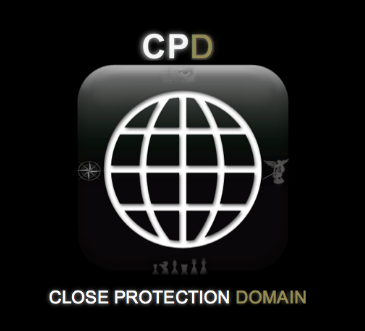Executive Protection Lessons in Light of Pope's Close Call in Brazil
Page 1 of 1
 Executive Protection Lessons in Light of Pope's Close Call in Brazil
Executive Protection Lessons in Light of Pope's Close Call in Brazil

When Pope Francis’s driver made a wrong turn in Rio de Janeiro, Brazil, he inadvertently drove executive protection (EP) into the world’s headlines. In the July 22, 2013, incident, the Pope’s motorcade departed from its cleared route and was repeatedly forced to a stop by great throngs of people pushing to reach the Pope through his open window. His security team eventually extricated his compact car from the crush, yet the episode put the protectee at significant risk. There’s a sermon in this story: car travel is one of the most dangerous things a protectee does and one of an EP specialist’s greatest protection challenges.
Executive protection always starts with a risk assessment. At the time of the visit to Brazil, Pope Francis had been in office only four months. He is the first pope from South America, so huge crowds of well-wishers were expected. But flocks of the faithful were not the only challenge. Brazil experiences a high rate of crime, and in the weeks leading up to the Pope’s visit, Rio had witnessed violent protests against the government. Just days before his visit, a protest in one of Rio’s most affluent neighborhoods erupted into looting, property destruction, and fires.
From the very beginning of his papacy, Pope Francis has chosen to live modestly and with low-profile security to demonstrate solidarity with ordinary people. That is his prerogative, yet one must not underestimate the potential dangers of driving a VIP through teeming streets.
What could happen? On December 9, 2010, Britain’s Prince Charles and his wife Camilla, the Duchess of Cornwall, were riding through London’s theater district surrounded by a cordon of motorcycles. Making their way to a pre-Christmas show at the London Palladium, the royals were spotted by demonstrators who were violently protesting planned tuition increases. From a seething crowd of 400 to 500 persons, some 50 protesters pushed past the police escort and royal security guards. They threw paint bombs at the car, kicked dents into its doors, and smashed its rear window. They shouted “off with their heads!” and “Tory scum!” Some were carrying gasoline to use in arson attacks. The protectees were at great risk, and the incident raised the chance that protesters, too, could be harmed by security forces.
Like the royals’ London episode in 2010, the papal motorcade incident in Rio is a reminder that executive protection is a serious business where mistakes can lead to grave consequences. Near avoidance of disaster is not the goal. Full-time EP specialists, and every security professional occasionally tasked with personal protection responsibilities, should remember the following:
· Most attacks against protectees occur in or around automobiles. Beware.
· Crowds are unpredictable and hard to control. Avoid them whenever possible.
· If a drive through packed streets is necessary, it is essential to develop primary and backup routes, with emergency resources (police, hospitals, etc.) identified along the way. Stick to the planned routes; that’s where the help is. A tested, safe secondary route could come in handy if the primary route becomes clogged. Another benefit: if the protectee asks to go a different way, for whatever reason, the EP operation will have at least one acceptable alternative to suggest.
· It is reported that the Pope’s driver turned into the wrong side of a boulevard, missing the cleared route. The lesson is to make sure the driver has driven the routes in advance and recognizes all the twists and turns. If a lead car is used, its driver, too, should have driven the routes in advance so that he or she will not accidentally lead the protectee’s car astray.
· The most dangerous times are arrival and departure. Keep the speed up. Getting stopped and swarmed by a crowd is a disaster waiting to happen. This is the ideal time for a lone gunman or other adversary to attack the protectee. If an assault is launched, there is no escape route. If the protectee is injured, medical personnel will not be able to reach him or her.
· A bullet-resistant vehicle is no panacea, but it can buy time. It’s like a safe room on wheels. Eventually it can be penetrated, but it can provide a few extra minutes of refuge while the driver tries to move the car to safety or emergency personnel race to the scene.
Any protectee—Pope, prince, or CEO—may make choices that increase risk. It is up to the EP specialist to rise to the challenge, provide advice when feasible, and at all times minimize danger through preparation, avoidance, speed, and attention to detail—in other words, the art of executive protection.
Robert L. Oatman, CPP, a noted executive protection expert, is president of R.L. Oatman and Associates, Inc.
 Similar topics
Similar topics» Call for Views on Close Protection Licence Arrangements
» Current Vacancies: Country Managers, Close Protection Team Leaders and Close Protection Operators
» 7 day Executive Protective surveillance and covert Executive Protection course
» Leadership in Executive Protection
» The Top Five Executive Protection challenges
» Current Vacancies: Country Managers, Close Protection Team Leaders and Close Protection Operators
» 7 day Executive Protective surveillance and covert Executive Protection course
» Leadership in Executive Protection
» The Top Five Executive Protection challenges
Page 1 of 1
Permissions in this forum:
You cannot reply to topics in this forum
 Home
Home Register
Register Log in
Log in




» OSINT's books
» Hire Bodyguard in London
» Contact for work
» Updated CV
» Introduction
» Intersec 2017
» HLR/D-HLR Instructor Sweden
» CP SIA, MIRA Quaified